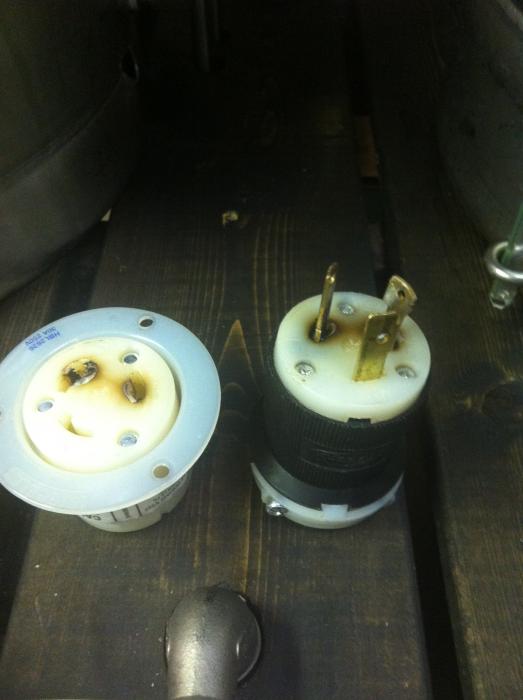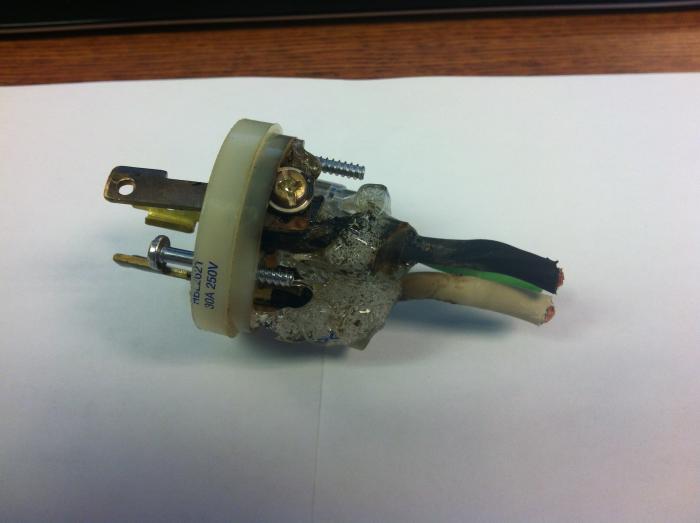RussH
Well-Known Member
I just thought I'd post this, as it may prevent others from letting the smoke out of their element connectors / wiring.
When I built my brewery, I tinned (soldered them to keep the strands all together) all of the wire ends. I have had issues in the past on other projects, where when a wire was inserted into a screw down block, one strand separated from the group and shorted with another terminal, and tinning the wire ends eliminates the possibility of this.
I have been brewing on this system for a couple of years, and generally boil at around 50% duty. Last week I brewed an imperial stout, and to get the gravity up, I boiled for a full 2 hours at 100% duty. When I went to unplug the kettle for cleaning I found that the two halves of the connector had melted together! After prying them apart, and disassembling the connector I found this: (see images below)
I talked it over with an electrician at work, and found out that tinning large gauge wire is not recommended, since it prevents the strands from squishing flat in the screw down, and results in a fairly small contact are for the current to travel through.
I have ordered new parts, and will be cutting off all the tinned ends of my large gauge connections. These plugs are 240V 30A rated, running 5500W elements, so they are safely below the rated load. I just wanted to give you all a heads up. Im just thankful I didnt burn down the garage.


When I built my brewery, I tinned (soldered them to keep the strands all together) all of the wire ends. I have had issues in the past on other projects, where when a wire was inserted into a screw down block, one strand separated from the group and shorted with another terminal, and tinning the wire ends eliminates the possibility of this.
I have been brewing on this system for a couple of years, and generally boil at around 50% duty. Last week I brewed an imperial stout, and to get the gravity up, I boiled for a full 2 hours at 100% duty. When I went to unplug the kettle for cleaning I found that the two halves of the connector had melted together! After prying them apart, and disassembling the connector I found this: (see images below)
I talked it over with an electrician at work, and found out that tinning large gauge wire is not recommended, since it prevents the strands from squishing flat in the screw down, and results in a fairly small contact are for the current to travel through.
I have ordered new parts, and will be cutting off all the tinned ends of my large gauge connections. These plugs are 240V 30A rated, running 5500W elements, so they are safely below the rated load. I just wanted to give you all a heads up. Im just thankful I didnt burn down the garage.





